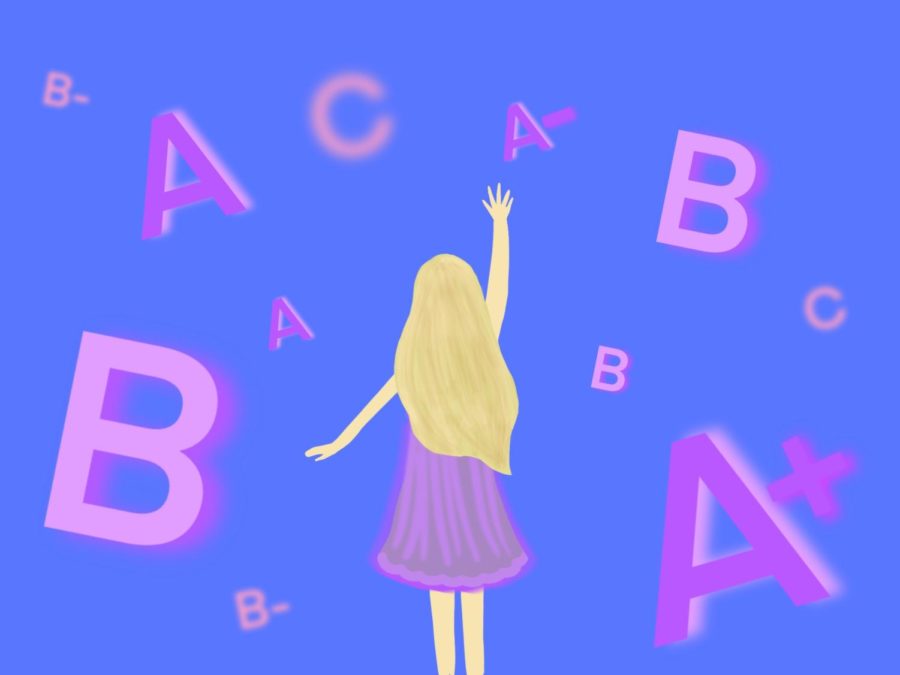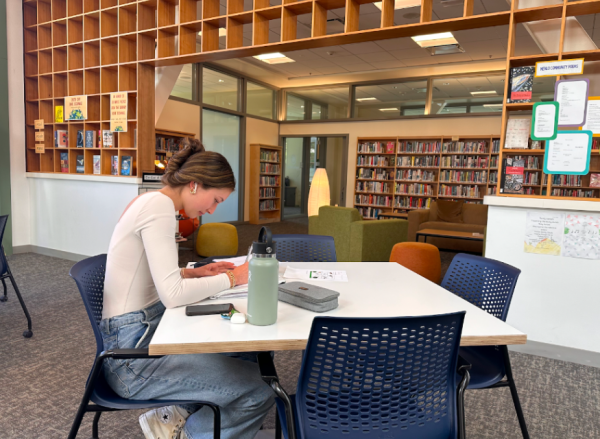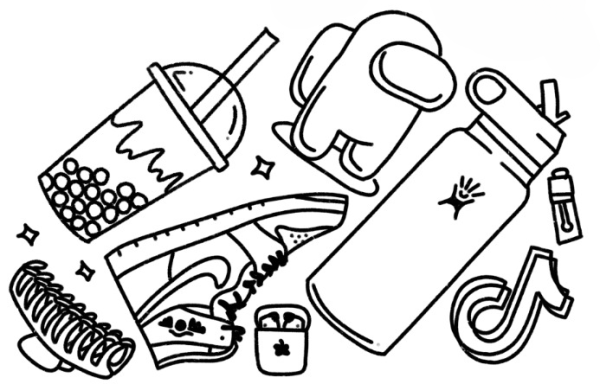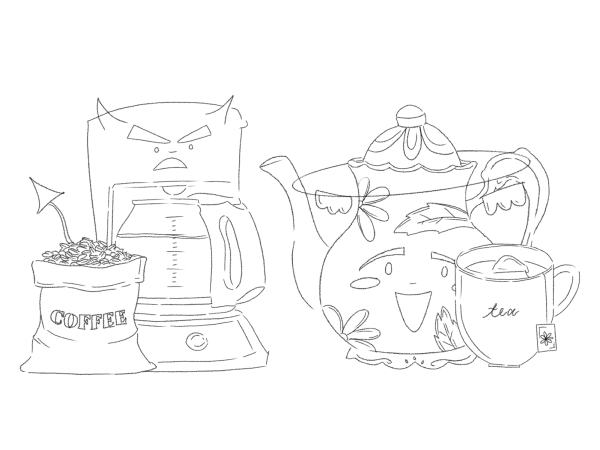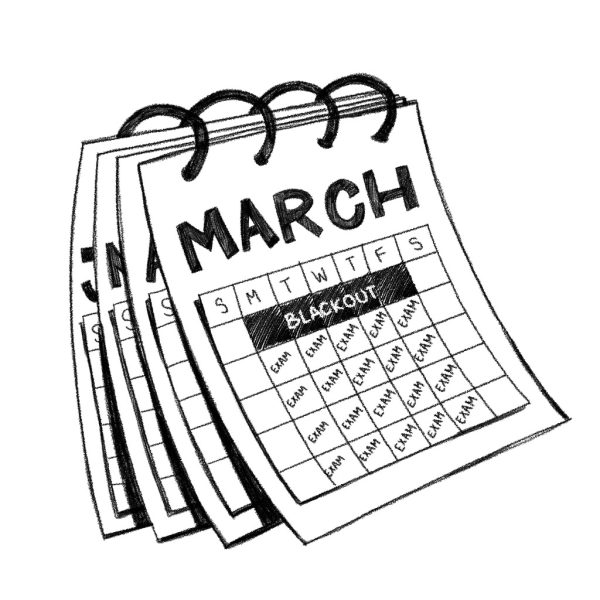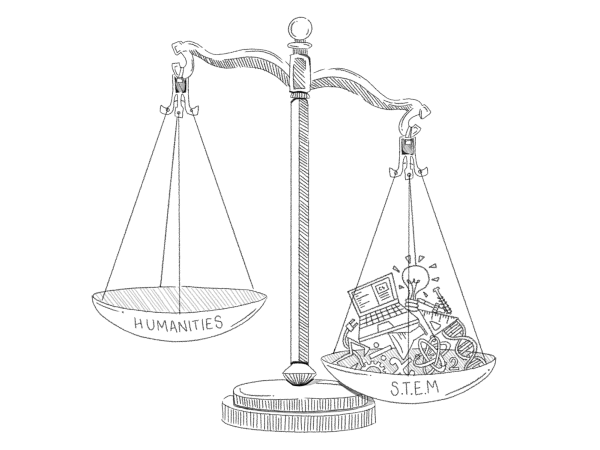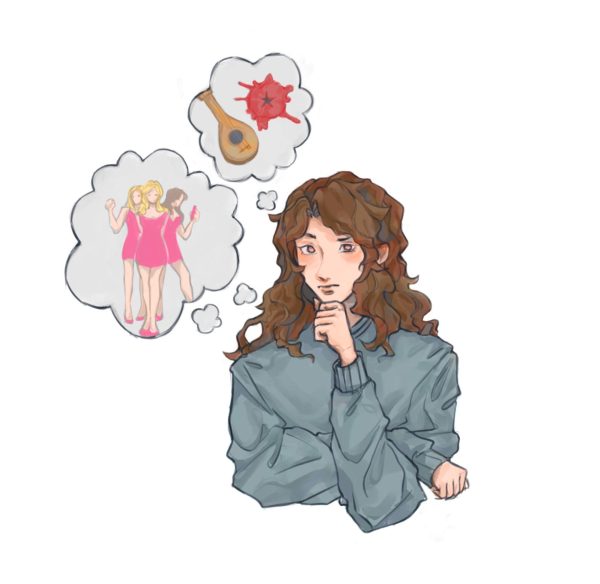Grades Should Be More Accessible to Students Online
Grades should be made consistently accessible on Canvas so that students have an accurate and ongoing understanding of their performance in a class. Staff illustration: Sophie Fang.
March 13, 2022
Expectations are high in the competitive, rigorous Menlo environment. Students strive to produce the best work they can, which is then reflected in their grade reports, seen and sent out to families and students four times a year. Menlo’s report card system is slightly different from nearby public schools, such as Palo Alto High School, Menlo-Atherton High School and Woodside High School, which allow their students to view their grades at all times online. In the 2020-21 school year, Menlo began using Canvas, a course management system that also allowed students to view their grades in some of their classes. Now that school has returned to in-person learning, grades on Canvas are unavailable. Even though virtual learning is no longer the norm, grades should still be made consistently accessible on Canvas, so that students are motivated to work hard without overthinking their grades.
Because report cards are not distributed until the end of the quarter, students often feel surprised by the grade they receive, unaware it was the one they had been earning all quarter. This also means students don’t always feel like they have enough time to fix grades that they’re unsatisfied with and leave feeling they could have done better. “I’d feel a lot more motivated if I could see my grades constantly,” junior Emma Borders said. “Then I wouldn’t feel like I’m scrambling to do better at the last minute.”
Furthermore, if class grades were always updated on Canvas, students would have more motivation as they would have more control and awareness of their grades. For example, if a student sees that their grade currently sits at a B- on Canvas, they may feel more obligated to put more work into their next assessments. Canvas even calculates how future assignments could boost students’ overall grades, further encouraging students to keep putting maximum efforts into their courses.
Menlo administration has fought to keep grades off Canvas, believing it is unhealthy for students to see their grades at all times and leads to obsessive behavior. However, competition has always been prevalent at Menlo, meaning accessibility to grades is not the root of this problem. Menlo students are competitive for many reasons, such as the high expectations for academic success that surround them. The overwhelming wealth in the Bay Area fosters competition, and as a community, we strive for ultimate success — whether it be in school or work. This atmosphere places pressure on Menlo students to do well in school and therefore be deemed “successful.” According to a report from California Review Management, in recent years, mental health issues and suicide rates have increased in top tier high schools near Palo Alto due to these ongoing societal pressures. Consequently, many Menlo students associate wealth with a prestigious high school education and good grades.Whether report cards are constantly available or not, this mindset will not change.
According to freshman Raul Sandoval, Menlo students tend to stress about grades quite regularly, regardless if they are available constantly or quarterly. “I don’t think accessibility to grades would create any more stress in students,” Sandoval said. “We care about our grades either way.” If anything, constant access to grades should reduce students’ obsessive behavior. Students would be less stressed knowing that they’re earning good grades in a given class or still have the opportunity to improve grades that they are not satisfied with.
When grades aren’t constantly accessible, students are responsible for monitoring their own performance. Although teachers are available for one-on-one meetings, not all of them are willing to inform their students of their current grade. Additionally, not all teachers have their students’ grades calculated at all times. Even though teachers are already busy and don’t always have time to calculate grades, this lack of awareness still causes students to spend unnecessary amounts of time attempting to calculate estimated grades. So, if grades are instead displayed on Canvas, calculations are made easier for both students and teachers.
On the day that report cards are sent out each quarter, many students are negatively impacted, too. Receiving a bad grade can ruin a students’ day, especially when it was completely unexpected. When report cards are released, some students also seem to compete for the best report cards. “It feels like we’re all comparing our report cards to one another,” sophomore Sofia Main said. “There’s awkward tension on the quad.” According to Main, there’s pressure to tell people your grades when asked, even when you want to keep them to yourself.
Students aren’t the only ones who obsess over grades; many Menlo parents also care deeply about their kid’s performances. One bad grade on a report card can create tension in a Menlo family. If students were able to see their grades beforehand, though, and therefore had the chance to improve them, then extra familial pressure could be prevented.
Grades should be visible on Canvas, proving to students that they have many opportunities to fix their grades throughout the year. Grades cause stress and competition, but accessibility to these grades should not be deemed a factor.


